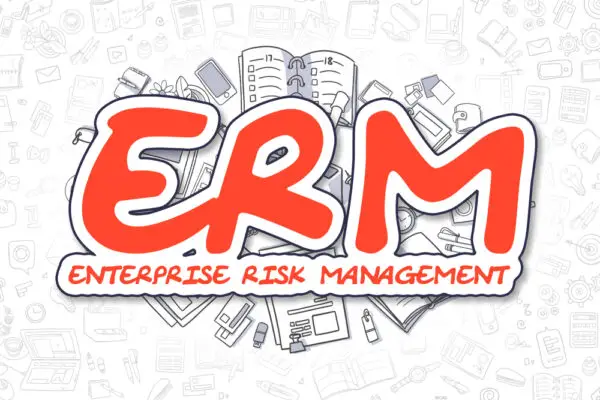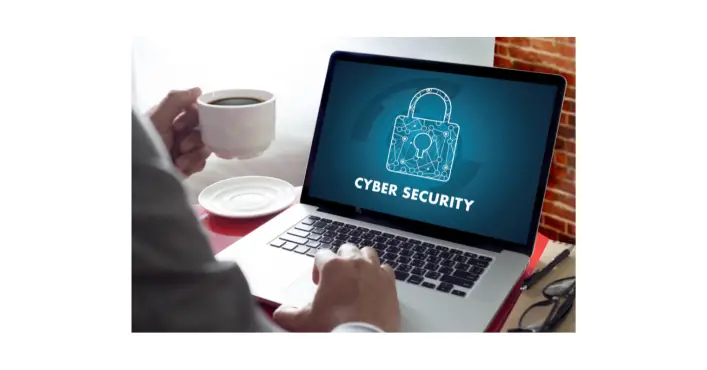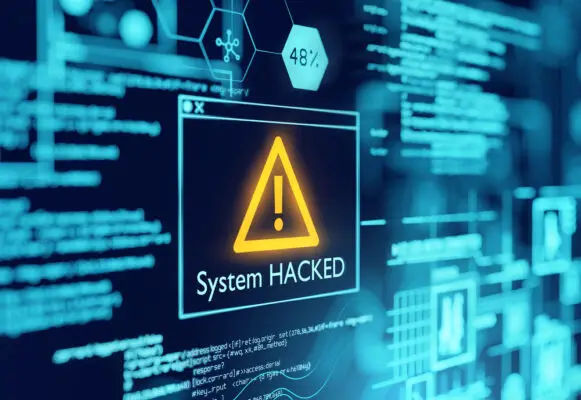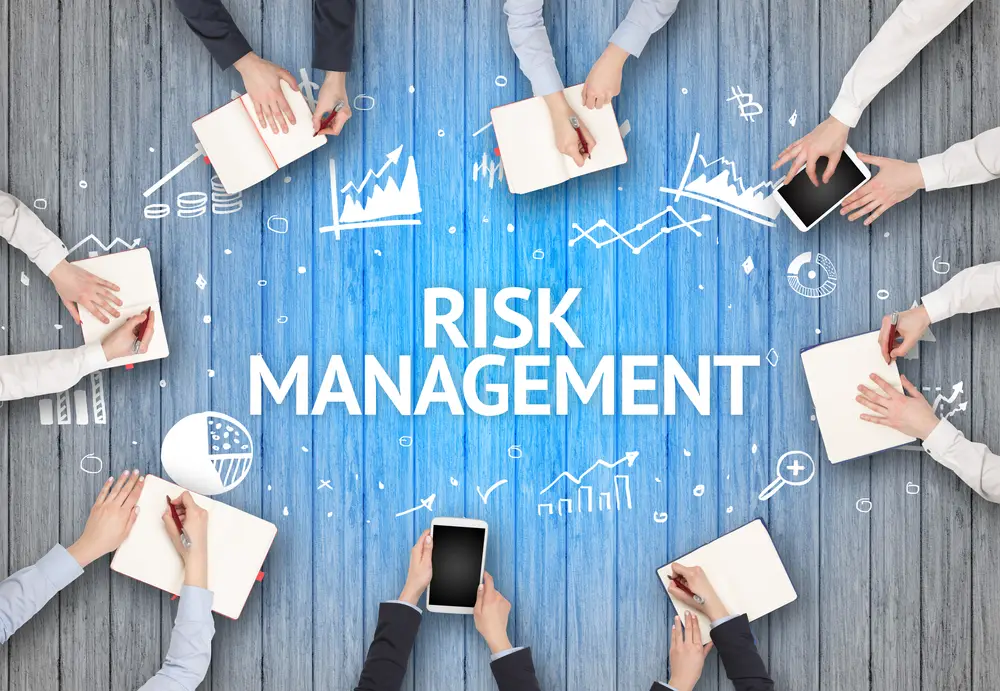Enterprise risk management (ERM) software has become an essential tool for businesses to identify and manage potential risks in today’s increasingly complex and interconnected world. The rise of information systems and critical technologies has made it more challenging for businesses to mitigate risks and protect their reputation and financial stability.
However, with so many options available in the market, choosing the right ERM solution for your business can be a daunting task.
The objective of this blog post is to provide guidance to businesses in choosing the right ERM solutions. We will focus on two industry leaders, LogicManager and MetricStream, and compare their key features and capabilities.
Introduction
This section delves into the process of identifying and mitigating potential risks to a project or business’s major goals through the use of risk assessments and continuous input throughout a project’s lifecycle.
Enterprise Risk Management (ERM) software and Risk Management Information Systems (RMIS) are two such solutions that can help organizations achieve this objective.
ERM software is a comprehensive system that enables organizations to identify, assess, monitor, and manage risks across the entire enterprise. RMIS, on the other hand, is a technology solution that helps organizations manage risks associated with their insurance policies and information policies.
Choosing the right ERM solution for your business can be a challenging task. The software should feature tools that allow taking a risk-based approach to every activity across the enterprise.
The solution should provide a structured approach towards managing organizational risks, enable multi-dimensional risk and control assessments, and provide real-time insights into risk management processes through powerful analytics, advanced heat maps, reports, dashboards, and charts.
The ERM system should offer comprehensive risk visibility and aggregation capability, allowing users to view risks by organization, product, process, or risk category.
Selecting the right ERM solution for your business is crucial to managing risks effectively. The software should be scalable and customizable to fit the needs of different organizations. It should provide a comprehensive risk library, support both top-down and bottom-up approaches to risk assessments, and allow measurement and tracking of key indicators for risks, controls, and performance.
The ERM solution should enable federated and centralized data models for better cross-org collaboration and leverage AI/ML to quickly identify issues based on relevance, relationships, and criticality.

Brief overview of enterprise risk management (ERM)
An understanding of enterprise risk management (ERM) provides organizations with a structured approach to identify, assess, monitor, and manage risks across the enterprise, allowing for the establishment of risk profiles and the implementation of risk mitigation plans to maintain business performance.
ERM focuses on identifying and assessing risk, developing strategies to mitigate risk, and monitoring and reporting on risk management activities. The process involves identifying risks that can impact an organization’s objectives, evaluating the likelihood and impact of these risks, and developing a plan to address them.
ERM helps organizations to prioritize their efforts and allocate resources to address the most significant risks. This approach ensures that an organization’s risk management efforts are aligned with its overall business goals and objectives.
ERM is an ongoing process that requires continuous monitoring and evaluation to ensure that risk management plans remain effective and up-to-date.
Importance of selecting the right ERM solution for your business
Selecting an effective ERM solution is crucial for organizations to navigate potential risks and uncertainties seamlessly, establish a robust risk management framework, and ensure business continuity in the face of unforeseen challenges.
The right ERM solution will assist businesses in identifying, assessing, monitoring, and managing risks across the entire enterprise. The solution should be scalable and customizable to fit the needs of different organizations.
An organization’s ability to manage risks effectively can have a significant impact on its success. A comprehensive ERM solution can help businesses make informed decisions, minimize potential risks, and protect their reputation and financial stability. Therefore, selecting the right ERM solution is critical for businesses to achieve their objectives, comply with regulations, and build a better tomorrow.
There are several factors to consider when selecting an ERM solution, including the organization’s size, industry, regulatory requirements, and risk management maturity. The solution should have a range of features and capabilities, such as risk assessment and analysis tools, risk monitoring and reporting, incident management, compliance management, and more.
The solution should also provide real-time insights into risk management processes through powerful analytics, advanced heat maps, reports, dashboards, and charts to empower smarter and risk-aware decisions.
Guiding businesses in choosing the right ERM solutions
Organizational size and industry are important factors to consider when selecting an ERM solution as they determine the complexity of the risks faced by the organization. A small business may not require a comprehensive ERM solution, while a large organization with multiple locations and complex operations would need a more scalable solution.
Similarly, the industry in which an organization operates also affects the types of risks it faces. For example, a company in the healthcare industry will have different risks than one in the technology industry.
Regulatory requirements are another important consideration when selecting an ERM solution. Organizations that are subject to regulatory requirements must ensure that their ERM solution meets these requirements.
Furthermore, the risk management maturity of an organization is also an important factor to consider. An organization that is just starting with ERM would require a more basic solution than one with a mature ERM program.
Understanding Your Business’s Risk Profile
In order to effectively manage risks across the enterprise, it is important for businesses to gain a comprehensive understanding of their risk profile. This involves identifying and evaluating all potential risks that may affect the organization’s operations, reputation, financial stability, and compliance. It also involves assessing the likelihood and potential impact of each risk, and prioritizing them based on their materiality and significance.
To understand their risk profile, businesses need to consider various factors, such as their industry, size, location, operations, customers, regulatory requirements, and historical data. They also need to involve all key stakeholders in the risk identification and assessment process, including senior management, employees, customers, suppliers, and partners.
Once businesses have a clear understanding of their risk profile, they can choose the right ERM solutions that align with their risk management objectives and priorities. This may involve selecting software that offers specific features and capabilities, such as risk assessment tools, risk monitoring and reporting, incident management, compliance management, and more.
It may also involve partnering with ERM service providers that offer outcome-based advisory services, training, and support.
Assessing your organization’s current risk landscape
Assessing the current risk landscape of an organization is a crucial step in identifying potential risks and developing effective risk management strategies. This process involves identifying and analyzing all potential risks that could disrupt the organization’s operations or damage its reputation.
The process includes evaluating internal and external factors that could impact the organization’s risk profile, such as economic, technological, social, and political factors.
In order to assess the current risk landscape of an organization, it is important to take a systematic approach. This involves conducting a risk assessment that identifies and assesses all potential risks across the organization.
The risk assessment should be based on a comprehensive understanding of the organization’s activities, processes, and objectives. It should also involve input from key stakeholders, such as management, employees, customers, and suppliers, to ensure that all potential risks are identified and evaluated.
The output of the risk assessment should be a comprehensive report that outlines the organization’s current risk landscape, including the likelihood and potential impact of each risk. This report should also include recommendations for managing each risk, such as implementing controls, transferring risks, or accepting risks.
Identifying key risk areas and vulnerabilities
Identifying key risk areas and vulnerabilities involves a proactive approach to identifying potential risks and vulnerabilities that could impact an organization’s operations, profitability, and reputation.
One way to identify these risks is through a risk assessment process, which involves analyzing a range of factors, including market conditions, regulatory requirements, and internal processes and controls. It is essential to involve key stakeholders and subject matter experts in the risk assessment process to ensure that all areas of the organization are adequately represented.
Another way to identify key risk areas and vulnerabilities is to review past incidents and near-misses. This can help organizations to identify trends and patterns that may indicate areas of weakness. For example, if a company has experienced several data breaches, it may indicate that there are vulnerabilities in its information security systems. Identifying these vulnerabilities can help organizations to develop strategies to mitigate the risks and prevent future incidents from occurring.
In addition to these approaches, organizations can also use industry benchmarks and best practices to identify key risk areas and vulnerabilities. This can involve reviewing industry reports and publications, attending industry conferences and events, and engaging with industry associations and networks.

Establishing risk appetite and tolerance levels
IOnce these areas are identified, the next step is to establish risk appetite and tolerance levels.
Risk appetite refers to the amount of risk that an organization is willing to accept in pursuit of its objectives, while risk tolerance refers to the amount of risk that the organization can withstand before its objectives are jeopardized.
Establishing risk appetite and tolerance levels is critical because it helps organizations make informed decisions about risk-taking. It allows organizations to prioritize risks and allocate resources accordingly.
For example, if an organization has a low risk appetite for data breaches, it may allocate more resources towards securing its IT systems and conducting regular security audits. This helps the organization manage risks more effectively and avoid potential losses.
To establish risk appetite and tolerance levels, organizations must consider their overall business objectives, regulatory requirements, and stakeholder expectations. They must also evaluate the potential impact of various risks on their operations and financial stability.
Once these factors are considered, organizations can establish risk appetite and tolerance levels that are aligned with their overall strategy and goals.
Key Features to Look for in ERM Solutions
First and foremost, an ERM solution should offer a robust risk assessment and analysis tool that provides a structured approach to managing organizational risks. This tool should allow organizations to perform multi-dimensional risk and control assessments, establish a risk profile, and gain real-time insights into risk management processes through powerful analytics, reports, dashboards, and charts.
Secondly, an ERM software should provide comprehensive risk visibility and aggregation capability. This feature allows organizations to view risks by organization, product, process, or risk category, and slice and dice data using easy filters. Additionally, the software should track the movement of risk from inherent to residual on a heat map based on the effectiveness of the controls. It should also allow users to measure and track key indicators for risks (KRIs), controls (KCIs), and performance (KPIs) and set thresholds to identify potential threats and mitigate them in advance.
The system should also send alerts and notifications on any breach to relevant personnel for faster decision-making.
Lastly, an ERM solution should have the ability to customize risk assessment to meet specific business needs and risk tolerance levels. It should offer expansive risk view with intuitive graphical dashboards and reports, and define risk scoring and aggregating logic. The software should support key metrics monitoring for proactive risk identification and allow defining controls as per industry standard frameworks like COSO and COBIT.
Additionally, the ERM system should leverage AI/ML to quickly identify issues based on relevance, relationships, and criticality, and recommend issue classification and action plans.
Comprehensive risk identification and assessment capabilities
Comprehensive risk identification and assessment capabilities are a vital feature to consider when evaluating ERM software, as they provide organizations with a structured approach to managing risks.
The software needs to enable organizations to understand their risk exposure at multiple levels and establish a risk profile based on multi-dimensional risk and control assessments. With real-time insights into risk management processes, organizations are empowered to make smarter and risk-aware decisions.
ERM software with comprehensive risk identification and assessment capabilities enables organizations to monitor risks in real-time, providing them with a clear view of potential threats and the ability to mitigate them in advance.
The centralized library and ERM framework help document and manage a wide array of enterprise risks, while the standard risk and control taxonomy, with many-to-many relationship mapping capability, supports model risk management plans based on organizational hierarchies.
With features such as risk aggregation using simple average as well as weighted average methods, organizations can gain a 360° view of their risk program through advanced visualization of key metrics.
ERM software with comprehensive risk identification and assessment capabilities is essential for organizations that wish to effectively manage risks in a structured and informed manner. With real-time insights into risk management processes and multi-dimensional risk and control assessments, organizations can establish a risk profile, monitor risks in real-time, and make informed decisions to manage risks effectively.
Integration of risk mitigation strategies and controls
The ability to integrate risk mitigation strategies and controls within ERM software allows organizations to streamline their risk management processes, which in turn improves their overall risk management capabilities. ERM software that does not offer this integration can result in disjointed risk management plans that are difficult to implement and track.
ERM software that provides integration of risk mitigation strategies and controls allows organizations to automate the monitoring of critical controls. This automation ensures that controls are in place and are functioning effectively, which enables organizations to identify and mitigate risks in real-time.
The integration of risk mitigation strategies and controls also provides organizations with a central repository of risk data and control information, which enables them to make informed decisions and implement effective risk management plans.
An integrated ERM software solution should provide organizations with the ability to define, implement, and monitor controls across their entire enterprise. The software should also provide real-time alerts and notifications when risks are identified, and the ability to track the progress of risk management plans.
Real-time monitoring and reporting functionality
Real-time monitoring and reporting functionality is an important feature of ERM software that enables organizations to identify and respond to risks promptly and make informed decisions based on real-time data.
This functionality allows organizations to continuously monitor risks and controls, track progress, and receive alerts and notifications when there is a breach or deviation from the expected risk profile. With real-time monitoring and reporting, organizations can detect potential issues early, take corrective action, and prevent negative consequences.
Real-time monitoring and reporting functionality provides organizations with a comprehensive view of their risk management program by offering a range of data visualization tools, including heat maps, dashboards, and reports.
These tools allow organizations to quickly and easily identify areas of concern, analyze trends, and track performance against key risk indicators. The data can be sliced and diced using filters and viewed by organization, product, process, or risk category.
Real-time monitoring and reporting functionality is a critical feature of ERM software that enables organizations to manage risks proactively, react promptly to potential issues, and make informed decisions based on real-time data.
This functionality offers a comprehensive view of the risk management program and provides data visualization tools to analyze trends, track performance, and identify areas of concern.
Customizability and scalability to suit your business needs
ERM software should allow for customization of risk assessments, reporting, and monitoring to fit the unique risk environment of an organization. This means that the software should be able to adapt to the organization’s risk appetite, risk tolerance, and business objectives.
Customizability and scalability also mean that the ERM software can grow with the organization. It should be able to handle larger datasets, additional users, and new risk categories without affecting performance or functionality.
The software should also be able to integrate with other systems and applications that are used in the organization. This allows for a more comprehensive view of risks across the enterprise and a more effective risk management program.
When choosing an ERM software, it is essential to consider the vendor’s ability to provide ongoing support and maintenance. The vendor should be able to provide training, technical support, and software updates to ensure that the software continues to meet the organization’s needs.
This is particularly important as the organization grows, changes, and faces new risks. A vendor that provides ongoing support and maintenance will help the organization stay ahead of emerging risks and continue to manage risks effectively.
Ease of implementation and user-friendliness
An important aspect to consider when implementing ERM software is its ease of implementation and user-friendliness. This is because a system that is difficult to use can negatively impact its adoption rate among employees, leading to low compliance and reduced effectiveness in managing risks. Therefore, it is essential to choose an ERM solution that is easy to implement and user-friendly for all stakeholders involved.
One way to ensure ease of implementation and user-friendliness is to choose an ERM solution that has a simple and intuitive user interface. The software should be easy to navigate and understand, even for non-technical users.
Additionally, the ERM software should be customizable to fit the unique needs of the organization, which can make it easier for users to adopt it and incorporate it into their day-to-day activities.
Another important consideration is the level of support offered by the vendor during and after implementation. The vendor should provide adequate training and resources to ensure that all users are comfortable using the software. Moreover, the vendor should provide ongoing support to help users troubleshoot any issues that may arise and address any questions or concerns.
Types of ERM Solutions and Their Applications
One type of ERM solution is the governance, risk, and compliance (GRC) software, which provides a comprehensive framework for managing risks across the enterprise. This type of software typically includes modules for risk assessment, compliance management, audit management, and incident management.
GRC solutions are beneficial to organizations that are subject to regulatory requirements and need to maintain compliance with various laws and standards.
Another type of ERM solution is the risk management information system (RMIS), which is a software platform that enables organizations to identify, assess, and manage risks. RMIS solutions typically include modules for risk assessment, risk mitigation, incident management, and reporting.
This type of software is particularly useful for organizations that want to automate their risk management processes and gain real-time visibility into their risk profile. RMIS solutions are also scalable and can be customized to meet the specific needs of different organizations.
A third type of ERM solution is the business continuity management (BCM) software, which helps organizations prepare for and respond to disruptive events such as natural disasters, cyber-attacks, and pandemics.
BCM solutions typically include modules for risk assessment, business impact analysis, crisis management, and disaster recovery planning. This type of software is particularly beneficial to organizations that operate in volatile industries or are located in areas prone to natural disasters. BCM solutions can help organizations avoid costly disruptions and ensure business continuity in the face of adversity.

Governance, Risk, and Compliance (GRC) platforms
These platforms are designed to help organizations manage risk and regulatory compliance in a more integrated and efficient manner. GRC platforms provide a comprehensive suite of tools to help organizations manage risk, compliance, and governance activities.
They typically include features such as risk assessment and analysis tools, compliance management, incident management, and reporting capabilities. These platforms are built on a single, scalable platform that supports organizations wherever they are on their GRC journey.
One of the key advantages of GRC platforms is their ability to help organizations take a more holistic approach to risk management. GRC platforms can also help organizations identify and mitigate emerging risks, which can be critical in today’s rapidly changing business environment.
Operational risk management software
Operational risk management software is a critical component of any organization’s risk management strategy, providing tools to help identify, assess, and mitigate operational risks across the enterprise. Operational risks are those that arise from the day-to-day operations of an organization and can include everything from supply chain disruptions to employee errors.
Operational risk management software typically includes a range of features and capabilities, such as risk assessment and analysis tools, risk monitoring and reporting, incident management, and compliance management.
The software enables organizations to take a risk-based approach to every activity across the enterprise, helping businesses make informed decisions and minimize potential risks. The software also helps organizations protect their reputation and financial stability by providing real-time insights into risk management processes through powerful analytics, advanced heat maps, reports, dashboards, and charts.
Choosing the right operational risk management software for your business is crucial. When selecting a software solution, it’s important to consider the specific needs and requirements of your organization. It’s essential to choose a software that is scalable and can be customized to fit the needs of your organization.
Additionally, the software should feature tools that allow taking a risk-based approach to every activity across the enterprise, as well as provide real-time insights into risk management processes.
Financial risk management tools
These tools help organizations identify, assess, and manage financial risks that can arise from market fluctuations, credit and liquidity risks, and operational risks. Effective financial risk management solutions can help organizations make informed decisions that mitigate risks while maximizing profits.
One of the most critical financial risk management tools is risk assessment and analysis software. This software helps organizations identify potential financial risks and assess the impact of those risks on their operations.
This information can help organizations develop risk mitigation strategies that reduce the impact of potential financial risks.
Additionally, risk assessment and analysis software can help organizations monitor and track risk events, providing insights into trends and patterns that can help inform future risk management strategies.
Another essential financial risk management tool is compliance management software. This software helps organizations ensure that they comply with relevant regulations and standards.
Effective compliance management can help organizations avoid costly fines and penalties, protect their reputation, and maintain stakeholder trust.
Cybersecurity risk management solutions
Effective cybersecurity risk management solutions are essential to protect organizations from the increasing threat of cyber attacks and data breaches. These risks can result in significant financial losses, reputational damage, and legal liabilities. Cybersecurity risk management solutions can help organizations identify, assess, and mitigate risks to their information systems, critical technologies, and data.
One of the key features of cybersecurity risk management solutions is risk assessment and analysis tools. These tools enable organizations to identify potential cybersecurity risks and evaluate their likelihood and potential impact. Through the assessment process, organizations can prioritize their risks and allocate resources to mitigate the most significant threats.
Additionally, cybersecurity risk management solutions typically include tools for security monitoring and reporting, incident management, and compliance management.
To select the right cybersecurity risk management solution for their organization, companies should consider their specific needs and risk profile. Factors such as industry, size, and regulatory requirements may influence the type of solution needed. Additionally, organizations should evaluate the solution’s capabilities, scalability, and ease of use.
The solution should provide comprehensive coverage of cybersecurity risks and be flexible enough to adapt to changing threats and business needs.

Industry-specific risk management solutions
Industry-specific risk management solutions are tailored to meet the unique needs of organizations operating in specific sectors, providing a more targeted approach to identifying, assessing, and mitigating risks.
These solutions are designed to address the unique challenges that businesses face in their respective industries, taking into account the industry-specific regulations, compliance requirements, and risk factors.
For example, healthcare risk management solutions are designed to address the unique risks associated with patient safety, HIPAA compliance, and data security. Similarly, financial services risk management solutions are tailored to address the risks associated with fraud, money laundering, and regulatory compliance.
These solutions provide organizations with a framework for identifying, assessing, and mitigating risks, as well as a set of best practices and guidelines for risk management. They also provide access to industry-specific data and benchmarks, allowing organizations to compare their risk management practices to those of their peers and competitors.
Evaluating Potential ERM Solution Providers
Evaluating potential ERM solution providers involves assessing their capabilities, features, and expertise to ensure that the selected provider aligns with the organization’s risk management needs and objectives.
One of the primary considerations when evaluating potential ERM solution providers is to examine their track record and experience in providing software solutions to businesses within the same industry.
Industry-specific ERM solutions are designed to address risks that are unique to a particular sector. Therefore, a provider with extensive experience in the industry will likely have a better understanding of the risks and challenges that the organization may face.
Another crucial factor to consider when evaluating potential ERM solution providers is their ability to customize their solutions to meet the organization’s specific risk management needs. The provider should be able to tailor their software to align with the organization’s existing risk management processes and integrate with other systems, such as compliance and governance workflows.
The ability to customize the ERM solution will ensure that the organization can effectively manage risks in a manner that is consistent with its objectives and strategies.
Moreover, the provider’s customer service and support capabilities are essential considerations when selecting an ERM solution provider. The provider should offer comprehensive training and support to ensure that the organization can effectively use their software.
Additionally, they should have a team of experts who can provide timely and effective support when issues arise. A provider that offers ongoing support and guidance can help the organization achieve its risk management objectives more efficiently.
Assessing the provider’s industry experience and expertise
A provider with industry-specific knowledge can offer customized solutions that address the risks unique to the industry. Additionally, they can advise on regulatory requirements and compliance standards that the organization must meet.
An experienced provider can provide valuable insights and best practices that can improve the organization’s risk management program.Furthermore, an experienced provider can help the organization identify emerging risks and potential threats that may not be apparent to the organization.
An experienced provider can offer customized solutions, provide valuable insights and best practices, and help the organization identify emerging risks and potential threats. Therefore, organizations should choose a provider who has a proven track record of success in implementing ERM solutions and has experience in the industry-specific risks and challenges faced by the organization.
Reviewing customer testimonials and case studies
The experiences of other companies that have implemented the software can offer valuable information about the product’s capabilities and limitations.
Testimonials and case studies can provide a detailed understanding of the software’s features, such as risk assessment tools, incident management, and compliance management, and how these features helped organizations manage their risks.
Customer testimonials and case studies can also help potential users assess how easy or difficult it is to implement and use the ERM software. Such information can be crucial in determining whether the solution is right for your organization.
For instance, case studies can reveal the types of challenges faced by other companies during implementation, such as integrating the software with existing systems and training employees on how to use it. Understanding these challenges can help organizations prepare for potential obstacles and ensure a smoother adoption process.
In addition to providing information on the software’s capabilities and implementation process, customer testimonials and case studies can also highlight the impact of the ERM solution on the business. They can provide concrete examples of how the software helped companies mitigate risks, improve compliance, and enhance overall business performance.
Comparing costs, features, and support services
it is essential to consider the cost of the product and its features. LogicManager’s ERM software is significantly more expensive than MetricStream’s, but it offers a variety of features, such as centralized libraries of industry-specific potential risks and pre-built, configurable risk assessments criteria, and One-Click Compliance to reduce effort and time required to satisfy compliance requirements.
On the other hand, MetricStream’s ERM software has a federated and centralized data model for better cross-org collaboration, supports expansive risk view with intuitive graphical dashboards and reports, and supports key metrics monitoring for proactive risk identification.
Another factor to consider when choosing the right ERM software for your business is the support services offered by the provider. LogicManager offers outcome-based advisory services to help streamline processes and achieve objectives. MetricStream, on the other hand, leverages AI/ML to quickly identify issues based on relevance, relationships, and criticality.
Both providers offer a demo and contact information for those interested in their software. However, LogicManager prioritizes privacy more than MetricStream, as evidenced by their privacy policy.
Ensuring compatibility with existing systems and processes
In our previous subtopic, we discussed the importance of comparing costs, features, and support services when choosing the right enterprise risk management solution for your business.
However, in addition to these factors, it is crucial to ensure that the chosen ERM software is compatible with your existing systems and processes. Implementing a new system that does not integrate well with your current systems can create inefficiencies, hinder productivity, and potentially lead to more risks.
When evaluating ERM solutions, it is essential to consider whether the software can seamlessly integrate with your organization’s existing systems and processes. This includes evaluating factors such as data storage and management, data transfer, and compatibility with other software used by your organization.
For instance, if your organization already uses a risk management information system (RMIS), it is important to ensure that the ERM solution can integrate with it to avoid redundancy and streamline processes.
Furthermore, compatibility with existing systems and processes extends beyond technical integration. It is crucial to ensure that the ERM solution aligns with your organization’s risk management methodology, compliance requirements, and reporting processes. This will ensure that the ERM solution is tailored to your unique organizational needs, improves efficiency, and provides accurate and relevant insights.

Conclusion
In conclusion, selecting the right enterprise risk management (ERM) solution is crucial for businesses to identify and manage potential risks effectively. With the rise of information systems and critical technologies, ERM software is becoming increasingly important for businesses to protect their reputation and financial stability.
To choose the right ERM solution for your business, it is essential to assess your business’s risk profile, review customer testimonials and case studies, and compare costs, features, and support services. Furthermore, it is crucial to consider the provider’s industry experience and expertise to ensure that they can effectively address your business’s specific needs.

Chris Ekai is a Risk Management expert with over 10 years of experience in the field. He has a Master’s(MSc) degree in Risk Management from University of Portsmouth and is a CPA and Finance professional. He currently works as a Content Manager at Risk Publishing, writing about Enterprise Risk Management, Business Continuity Management and Project Management.

